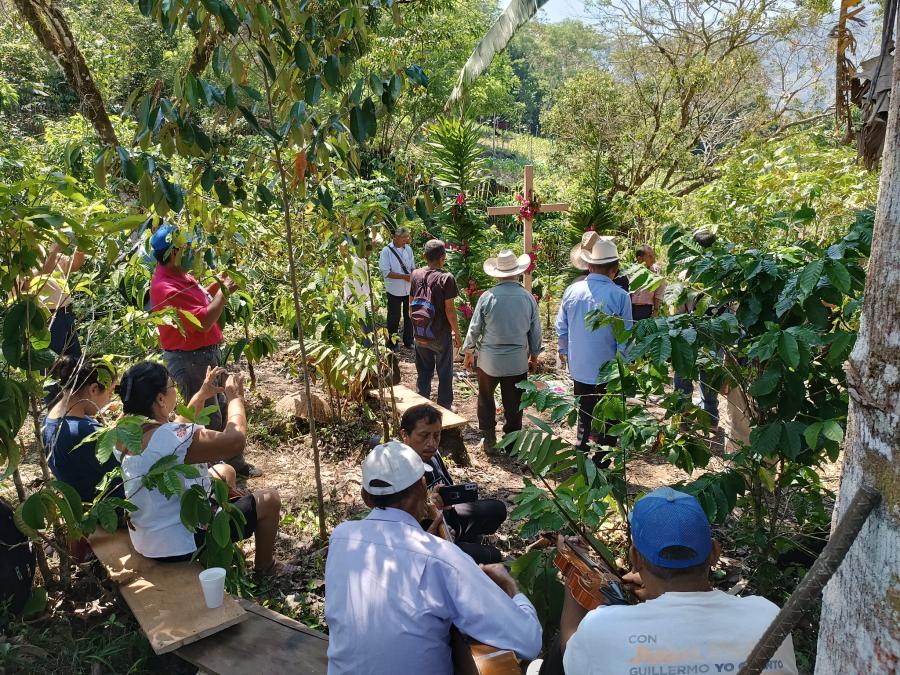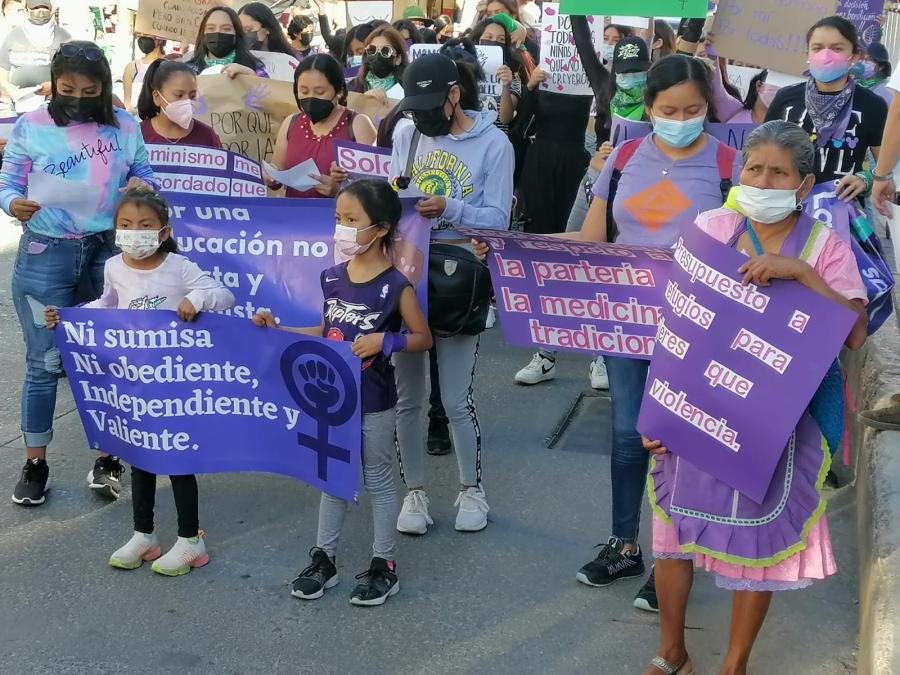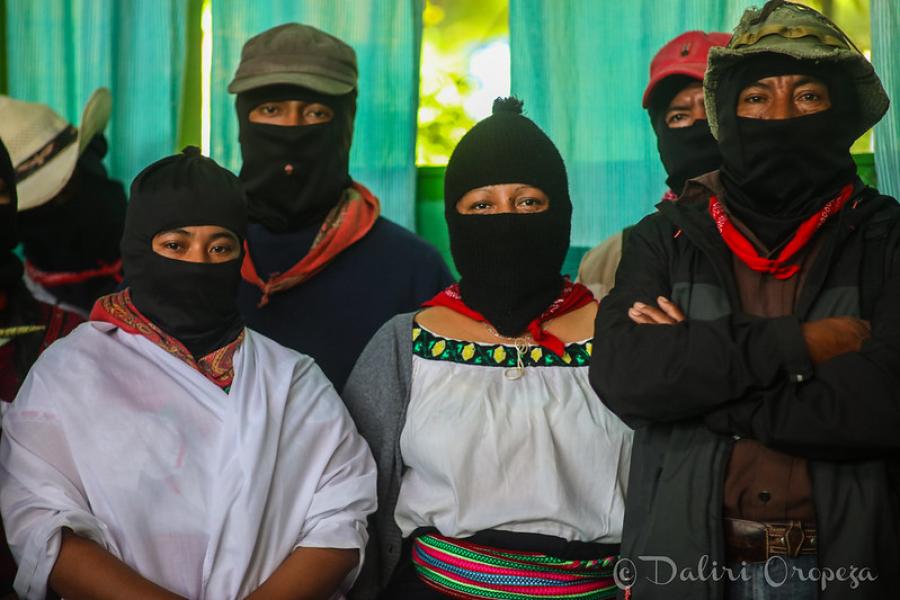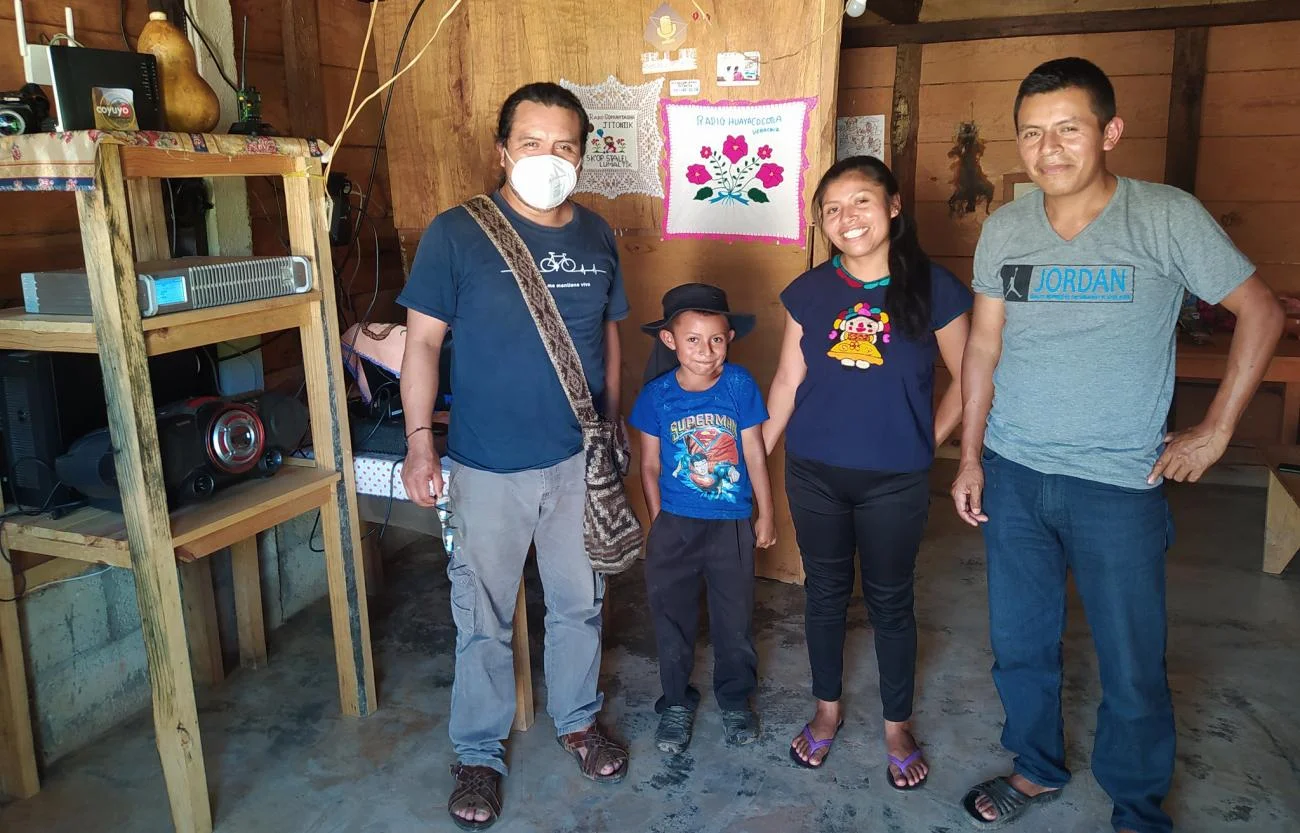
By Jesús Natalio (Tseltal)
My name is Jesús Natalio López of the Xilom lineage, originally from the town of Tseltal de Abasolo, located in the northwest of the municipality of Ocosingo in the state of Chiapas, Mexico. Our elders say that our town is older than our municipality and that previously it was not called Abasolo, but was known as Ji'tontik (place of the sand stones). The exact year in which it was founded is not known, but we are one of the Peoples that has survived so many different circumstances throughout our history, preserving our traditions, customs, language, and social organization.
We, the Tseltal Peoples, are called the tseej o'tan winik (people with a happy heart) because we always smile and celebrate achievements that are for the benefit of our community. We organize ourselves to buy a bull or cow to distribute its meat equally among different families who live together, sharing and enjoying that moment. We also have parties on special dates for our people. Some of them are religious, such as the procession for the beginning of our traditional authorities in the second week of the first month of the year. In the planting festival, held between April 26 and 28 (the date may vary), the ch'uy k'aal (traditional speakers) go out at night to the hills, springs, and other sacred places to give offerings and ask permission from Mother Earth to start cultivating corn and beans, among other crops.
There are also the festivals of the patron saints: San Santiago Apóstol in July and San Martín de Tours in November; the festival of the Virgin of Guadalupe December 9-12. We celebrate Christmas on December 24 with a communal festival where everyone contributes bean tamales and corn dough to make atol. During this festival, people from different communities and religions come to live together, and no one leaves without trying a glass of atol and a tamale, regardless of whether they were able to contribute.
Some of the non-religious holidays are the change of authorities, which takes place on the last day of December, as traditional elections are held in the third week of November. In this election, an assembly takes place where voting is done by a show of hands and the outgoing authorities organize basketball, soccer, and a traditional game called greased stick, where participants climb a smooth pole or one that has been made slippery. At 6:00 p.m., drum and flute music begins as a symbol of the appeal to the new authorities with bankilal (crushed Creole tobacco leaves) to witness the changeover, where the incoming authorities accept their commitment, mandate, and loyalty to the people. At midnight, firecrackers are set off to say goodbye to the year.
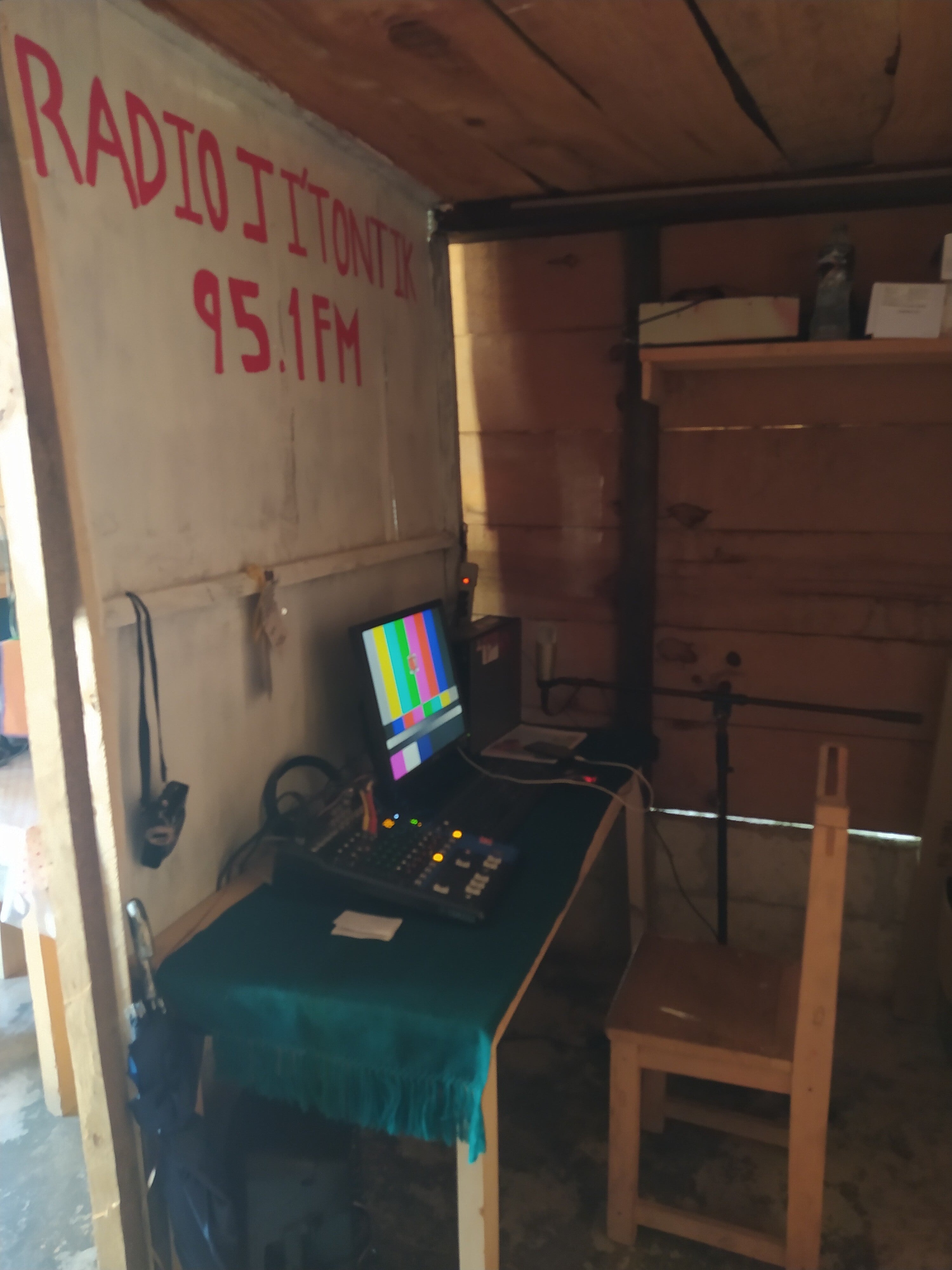
In addition to the festivities, our daily life goes on in our temperate climate that allows almost everything to be grown, although what is most consumed is corn, beans, pumpkin, chili, cane, banana, chayote, coffee, and oranges. Backyard birds such as chickens, turkeys, and ducks, along with rabbits, are also raised. Families previously lived in houses made of mud and straw, but today there are few of this style left, as wooden homes with galvanized sheet metal roofs are more common. Those with means, or who have migrated to the north to the United States, have concrete homes. Personally, my house is made of wood, a tin roof, a concrete floor, and some small glass windows.
I did my studies in my town going through preschool, primary, secondary, and preparatory levels of schooling at the Colegio de Bachilleres de Chiapas. I concluded my studies there because I could not continue with the next level due to lack of economic resources. My mom had gotten sick at that time, so I dedicated myself to working the land, always learning from my dad. I also wanted to do something for the benefit of my people because I saw many things that were wrong or unfair, and I wanted to make a difference.
On one such occasion, a group of people from the jungle walked through our town to ask for justice for the death of their companions. They shared with us how they were unjustly massacred by paramilitaries without the government intervening. They invited the people of the town to accompany them on their walk to the neighboring municipality of Oxchuc, where a press conference was to be held with international media and human rights representatives. I asked my father and mother if they would let me accompany them; they said yes. One of my little sisters accompanied me, but the group had left a little earlier, so we decided to follow them and found them resting a few kilometers further on. We thought that some people from our community had gone with them, but no one had dared. We introduced ourselves to the coordinators to tell them that we had decided to walk with them to their destination, but that was all we could do. They were very moved and told us that they had already gone to other communities but that no one had wanted to join them. They also introduced us to the others who had accompanied them, such as the International Service for Peace and Fray Bartolomé de las Casas Human Rights Center, coordinators of the pilgrimage.
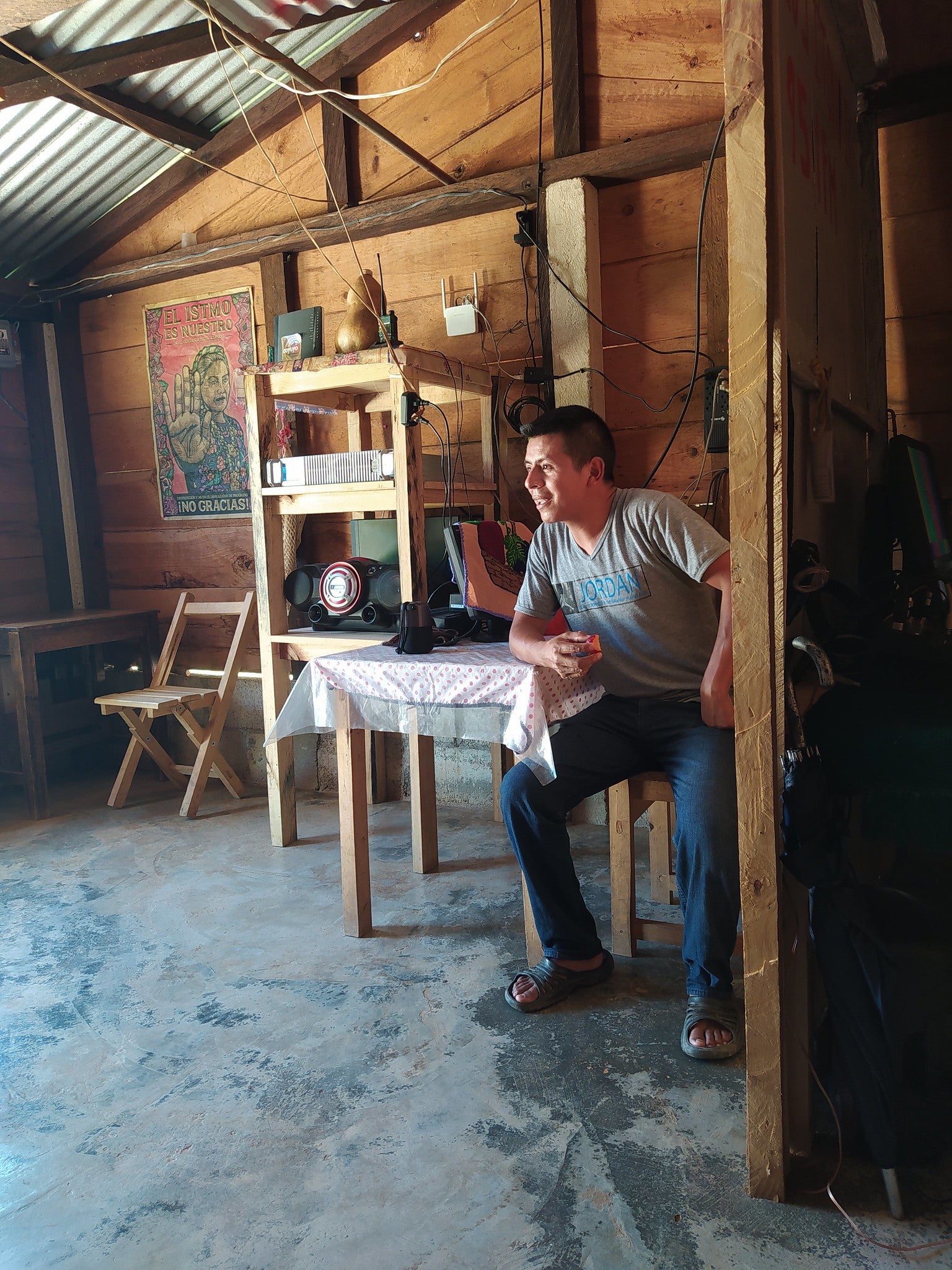
Thus we began our tour, with them telling us about their life experiences and struggles and how it doesn't matter how long it takes to walk to contribute to something good. They told us so many things that we lost track of time. We learned a lot from them; that it does not matter what we have if we do not know how to respect and thank Mother Earth who sustains us, who has raised and fed us. At the end of it all, they called all the compañeros to return to their communities and thanked us for having accompanied them, telling us that what we did was very important, because even though we were only two people, we represented our people, which they would not forget. They also urged us to continue maintaining the ideology of doing the common good and practicing good living. From this, my way of thinking and seeing things changed a lot.
After all this happened, a high school teacher from our town came to visit us to invite us to participate in a community communication project that they were thinking of starting, but that had not been possible because there were only three people. My little sister and I decided to accept the proposal, and we met with them to find out what they wanted to do. They told us that they wanted to start a community radio station and later continue with other community projects. We thought what they proposed to us was very good and we decided to participate, so we began to plan how it was going to be done, where we would install our cabin, and how we were going to acquire the equipment for the assembly of our radio station.
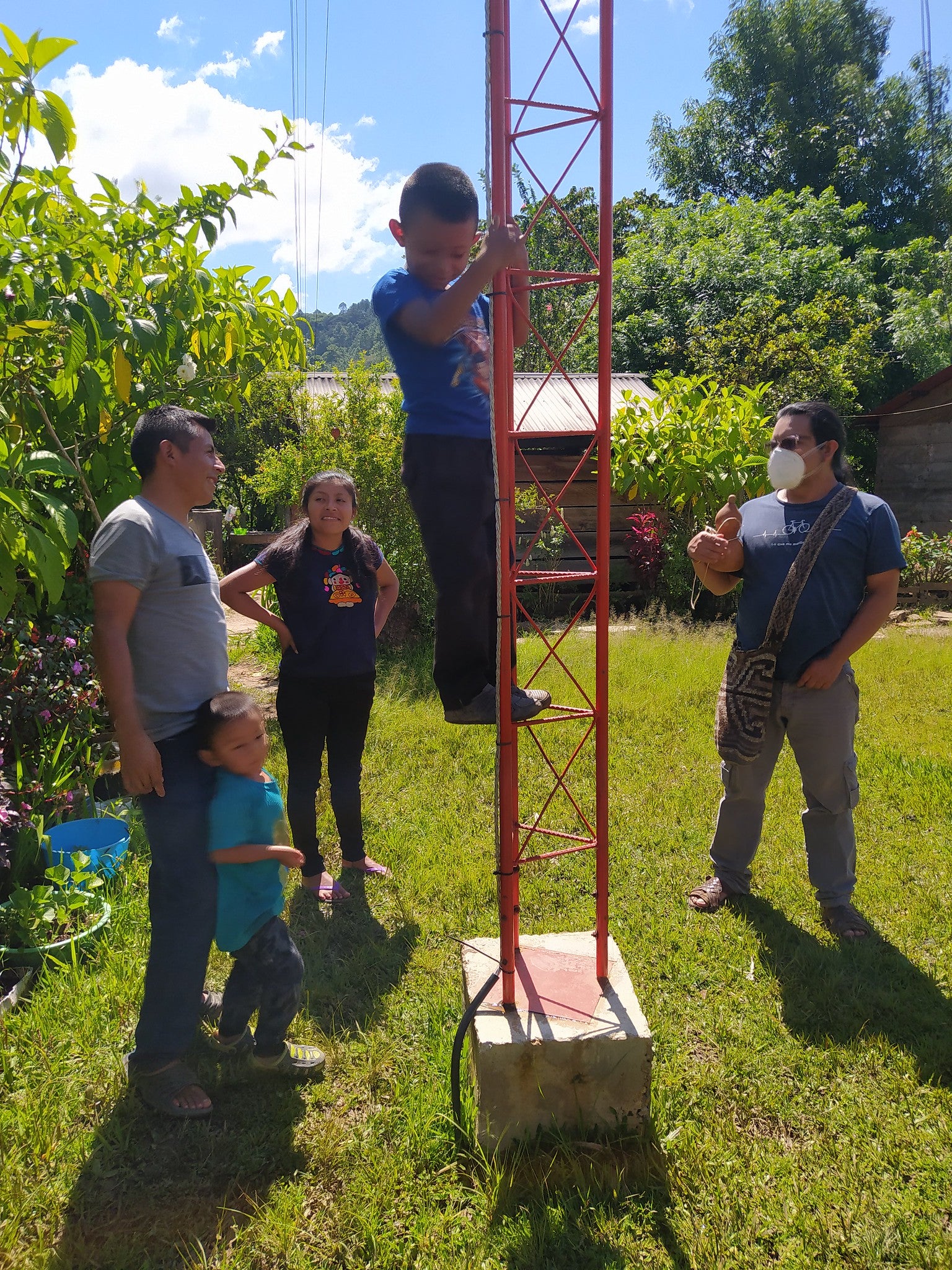
Little by little, several proposals came out, among which was requesting a donation of computer equipment from people who no longer used it, or people who had damaged equipment that could be restored. We had a good response from people; the only thing left was to figure out where and how to get the transmitter, which led us to decide that we were going to join forces to achieve our goal. In the end, we managed to buy a small 15-watt transmitter. On May 28, 2018, we did the first test on the air at 10:00 a.m. on the 95.1 FM frequency. It was well received by the community and the traditional authorities because it was the first time a project of this type was being implemented.
During the first days, the people of our town supported us with music on CD and cassette to create our music library. They suggested that we not play rap or reggaeton music, or, as they called it, “cholo music,” because it had nothing to do with our culture. Every day our cabin was full of people of different ages who wanted to see with their own eyes what a radio station is like and how it works. Many of our elders imagined that it would be large devices like refrigerators, and when they saw our small transmitter, they were surprised and could not believe that this small device was responsible for bringing the voice of the announcers to their homes and bringing the music through their radio receivers!
After a month we decided to make our official launch, asking for the support of our people to make it possible. The community was so happy and everyone participated by bringing firewood, eggs, tamales, beans, coffee, atole, music, and fireworks and so the party was held with our municipal and ejido authorities present, as well as the religious authorities who were in charge of asking Mother Earth and the creator for the protection of our devices, and that we should always follow the right path to strengthen the project. In the end, our ejido commissioner cut the white ribbon as a symbol that community radio, which we call Ji'tontik, was formally launched, thus beginning a long road in community communication.
Radio Ji'tontik received a grant from Cultural Survival's Indigenous Community Media Fund in 2020. The Indigenous Community Media Fund provides opportunities for international Indigenous radio stations to strengthen their infrastructure and broadcast systems and creates training opportunities for journalism, broadcasting, audio editing, technical skills, and more for radio journalists from Indigenous communities around the world. In 2021, the Indigenous Community Media Fund supported 57 media projects in 23 countries, totaling $340,500.
